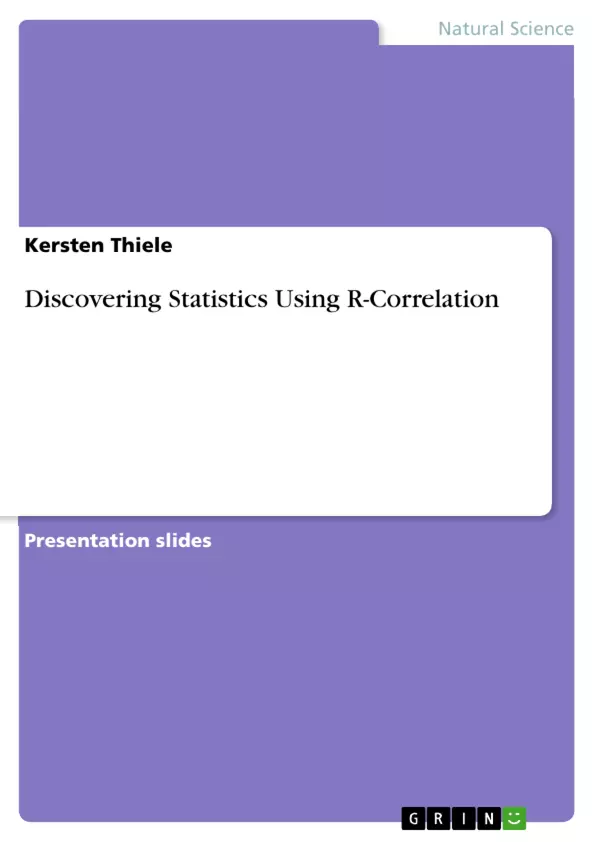Fresh up your knowledge about statistics using this presentation. It discusses topics like the correlation analysis, how to use R for correlations, different correlation coefficients and partial correlation. But why should correlation be interesting? Imagine you have created a TV-advertisement for an already existing sport drink called "BLUECOW" and your boss is asking you if your spot benefits the numbers of sold drinks. How can you find out if it does or if it’s crap? The answer is: You measure the correlation between the adverts and the numbers of sold drinks.
Inhaltsverzeichnis (Table of Contents)
- Chapter 6 Correlation
- Fresh up your knowledge - Correlation
- Do you still know anything about correlation from the statistics course?
- Starting slowly - Covariance
- Starting Slowly - Covariance - Example
- Covariance - Standardization
- Covariance - Example - Pearson's correlation
Zielsetzung und Themenschwerpunkte (Objectives and Key Themes)
This chapter aims to explain the concept of correlation and its applications in data analysis. It explores the relationship between two variables, demonstrating how changes in one variable affect the other. The chapter utilizes examples to illustrate the concept of correlation, particularly focusing on the relationship between advertising exposure and product sales.
- Understanding the concept of correlation and its significance in data analysis.
- Exploring the relationship between two variables and how they influence each other.
- Introducing the concept of covariance as a measure of the relationship between variables.
- Explaining the use of correlation coefficients to measure the strength of the relationship.
- Demonstrating the calculation and interpretation of Pearson's correlation coefficient.
Zusammenfassung der Kapitel (Chapter Summaries)
The chapter starts by introducing the concept of correlation, explaining how it describes the relationship between two variables and the impact of changes in one variable on the other. The concept of covariance as a crude measure of relationship is presented, and the use of correlation coefficients for quantifying the relationship is introduced.
A practical example involving advertising exposure and product sales is used to illustrate the application of correlation. The chapter further explores the interpretation of correlation coefficients and the significance of their values. It concludes with a detailed explanation of the calculation and interpretation of Pearson's correlation coefficient, a standardized measure of correlation derived from covariance.
Schlüsselwörter (Keywords)
This chapter focuses on the core concepts of correlation, covariance, and Pearson's correlation coefficient. It delves into understanding the relationship between variables and the significance of measuring their interdependence. The chapter uses practical examples to demonstrate how these concepts are applied in data analysis, particularly in marketing and advertising research.
- Quote paper
- Kersten Thiele (Author), 2018, Discovering Statistics Using R-Correlation, Munich, GRIN Verlag, https://www.grin.com/document/430073



